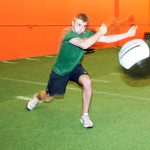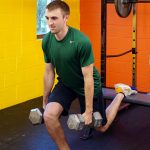4 Qualities of Optimizing Strength: Part 3-Reactive Strength
At F2P we believe a well-designed performance training program should center around increasing an athlete’s efficiency and ability for the movements that their sport requires. When looking at the majority of sport movements there are 4 qualities that work together to optimize strength for those movements. The first quality is Eccentric Ability, how well does your muscle work like a rubber band when stretching. The second is Yielding Strength, how well does your body resist/absorb force to be stable. The third is Reactive Strength, what is your muscle’s ability to go from a stretching action to a shortening action. And the fourth quality is Rate of Force Development (RFD), how fast and with how much force can your muscles create movement. One thing to note is all of this is joint and body specific, and will always happen. We are trying to make each quality more efficient thus making the athlete more explosive, powerful, and safer.
This blog post will focus on “Reactive Strength”.
Reactive Strength is your muscle’s ability to go from a stretching action to a shortening action. To put it in simpler terms, your muscle’s ability to absorb force in one direction and use that force to go in a different direction. The time it takes for your muscles go through this transition will greatly affect the power displayed in the outcome. It doesn’t matter if you are running, cutting, or trying to move an opponent, at the point of contact you must be able to optimally take the force your body is experiencing, absorb it correctly, and use it to your advantage. That force your body experiences at contact will put more potential energy on your muscles that you will be able to use for greater power output. There are a lot of different elements that go into Reactive Strength including all the other strength qualities. Understanding and training them how to work together will lead to greater performance on the field of competition. Each sport and even the different positions within a given sport will require different amounts of the elements of reactive strength.
At F2P we believe that Reactive Strength is one of the greatest elements that can be trained for improving athletic performance in sport. There are numerous ways that it can be measured, but the most common one that we use is our 4 jump reactive test. We measure the average height and average ground contact time over the same 4 continuous jumps. Then we divide the average jump height by the average ground contact time which gives us the athlete’s Reactive Strength Index (RSI). The RSI measures the athlete’s athletic potential which means how well the athlete can take in and transfer the power they can generate.
Reactive Strength doesn’t just put a high demand on the athlete’s muscles but also places a high demand on the athlete’s nervous system. Given that it is highly nervous system based, fatigue will have a big effect on it, which is why we track it on a weekly basis for our in-season athletes. This will help us determine how much volume and intensity to prescribe for our in-season athlete’s training programs. The fact that it is so highly nervous system based, it also shows the importance of having correct positions in the exercises when we are utilizing for its enhancement.
Reactive Strength is arguably the greatest strength quality you can enhance for athletic performance. Being able to track it will help tell the coach the level of fatigue the athlete is experiencing as well as what other strength qualities might be lacking for the given individual. Since it relies on the ability of your body to transfer force, the positions you place your body in when experiencing forces are of the utmost importance. Increasing the athlete’s Reactive Strength will increase their athletic potential during competition.





